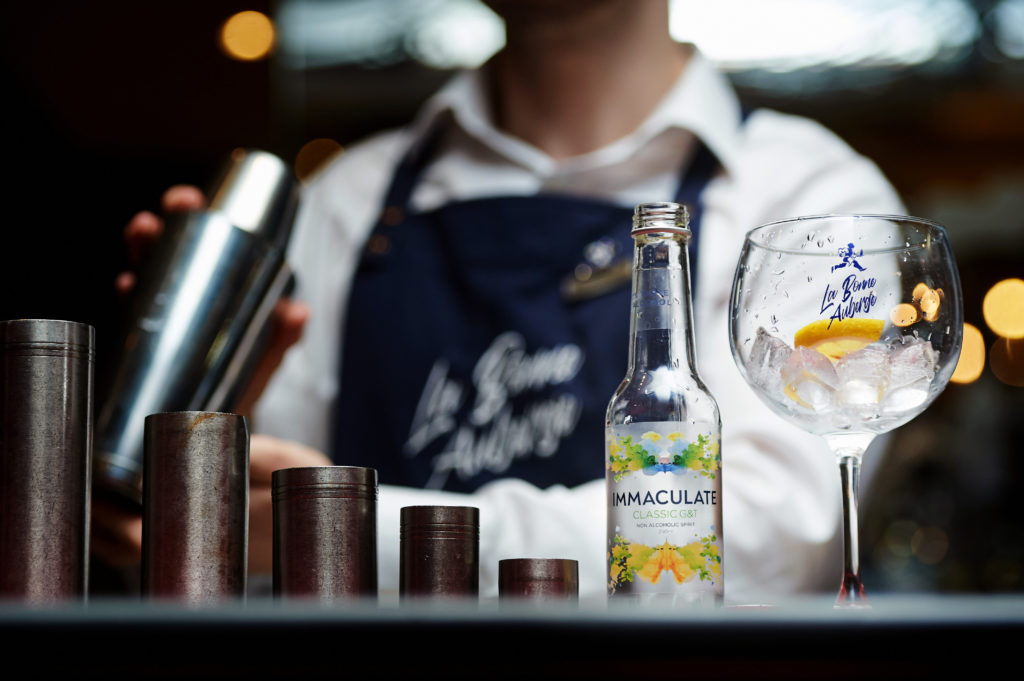
Haud yer Wheesht: listen tae low-alcohol lockdown libations
Wanting to cut down on your alcohol intake during the lockdown and beyond? Peter Ranscombe has some suggestions.
I DON’T know if it’s just my imagination or if it’s a guilty conscience, but my blue glass recycling box sounds like it’s been clinking just that wee bit more during lockdown.
If the number of memes with which I’ve been inundated is anything to go by, then I’m not the only one who’s been chuckling nervously about their alcohol consumption.
It’s perfectly natural – between home schooling, working from home, and continued social distancing it’s little wonder that we may be pouring ourselves an extra glass of wine or opening another bottle of beer.
Yet the chief medical officers’ health warnings – to limit our alcohol intake to a maximum of 14 units a week and include “dry” days in our routine – has certainly still been playing on my mind.
Over the past few weeks, I’ve written about some lighter options, including half bottles of wine to help us regulate our intake and lighter beers that don’t compromise on flavour.
Looking further back, lower alcohol wines have always been an important feature of The Grape & The Grain drinks blog, whether it’s those from cooler climates that are naturally lower in alcohol, or those that use clever techniques to reduce their heft, whether in the vineyard or in the winery.
For those who want to go further, there are also low- and even no-alcohol options.
Turning to the dark side
When it comes to beer, 0.5% alcohol by volume (ABV) is an important number to remember.
It’s hard to get the alcohol content down to zero because many drinks and, indeed, foods contain alcohol naturally – large ripe bananas are often held-up by way of an example.
Many low-alcohol beers come in the guise of lagers – like the truly awesome Jump Ship Yard Arm Lager that starred in my #DryJanuary or #TryJanuary article at the start of the year.
Harviestoun Wheesht sits at the other end of the colour spectrum – it’s a dark beer and it officially tips the scales at 0%.
What links the two are their textures; both leave you thinking you’ve had a beer, thanks to their rounded bodies – neither is watery, a pitfall for so many “alcohol-free” beers.
What’s really clever about Wheesht is that it delivers on the flavour front too by ticking the boxes for dark beer lovers, with its malted coffee flavours.
And now for something completely different
For those who are looking for something even more left-field, there’s Gosnells Low Alcohol Sparkling Mead, made down in London.
Gosnells is part of a new-wave of “meaderies”, turning honey into a beer-like alcoholic beverage.
Being a sparkler, the low-alcohol mead has a certain lightness to it, but it doesn’t compromise on the honey flavours either.
It’s 0.5% ABV and is made from a blend of honey, Assam tea, lemon peel, water and yeast, meaning it’s also gluten free.
For me, it was slightly too sweet on its own, but I could see that it had great potential to match salty foods after I tried it with a nibble of Mr Trotter’s Sausalami.
Beyond lockdown
The low-alcohol sector is one of the most innovative parts of the drink industry – and coronavirus won’t put a halt to that.
If your usual tipple is a gin and tonic then – once we’re all allowed to roam the streets again – it’ll be worth keeping an eye out for Immaculate Classic G&T, a non-alcohol “spirit” developed by Lynne Cadenhead, Carolyn Currie and Gaynor Simpson at Women’s Enterprise Scotland.
Its launch date had to be moved to later this year because of the lockdown, but it enjoyed a successful trial at La Bonne Auberge in Glasgow back in January.
It’s made using botanicals including juniper, coriander, lemon balm, calendula and cardamom, with the help of Hamish Martin from The Secret Herb Garden near Edinburgh.
I can see this being a hit with gin and tonic lovers; although it was perhaps slightly too bitter for me, it performed the same trick as Wheesht and Yard Arm – it delivered the same satisfying mouthfeel as the classic drink it’s attempting to emulate.

Read more of Peter Ranscombe’s blog entries about wine, whisky and other drinks on The Grape & The Grain at https://www.scottishfield.co.uk/grapegrain/
TAGS

